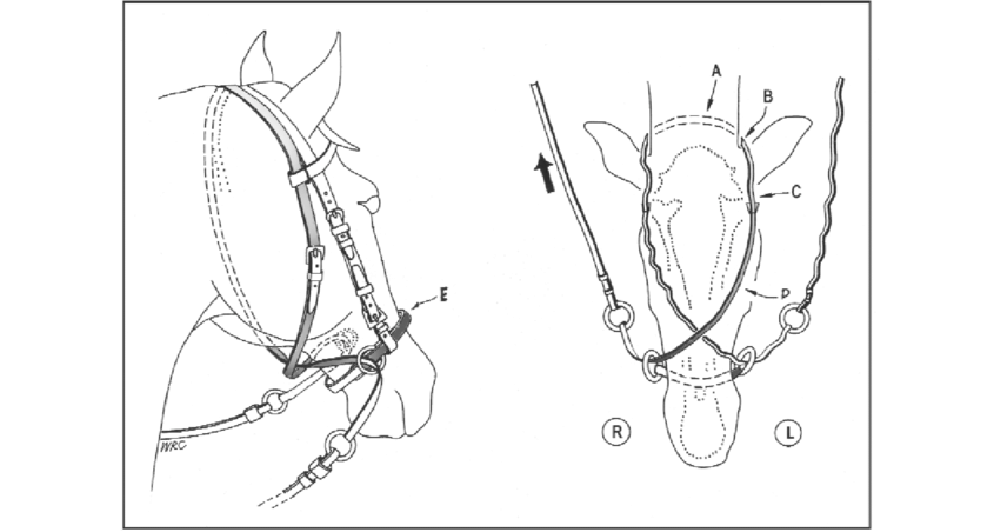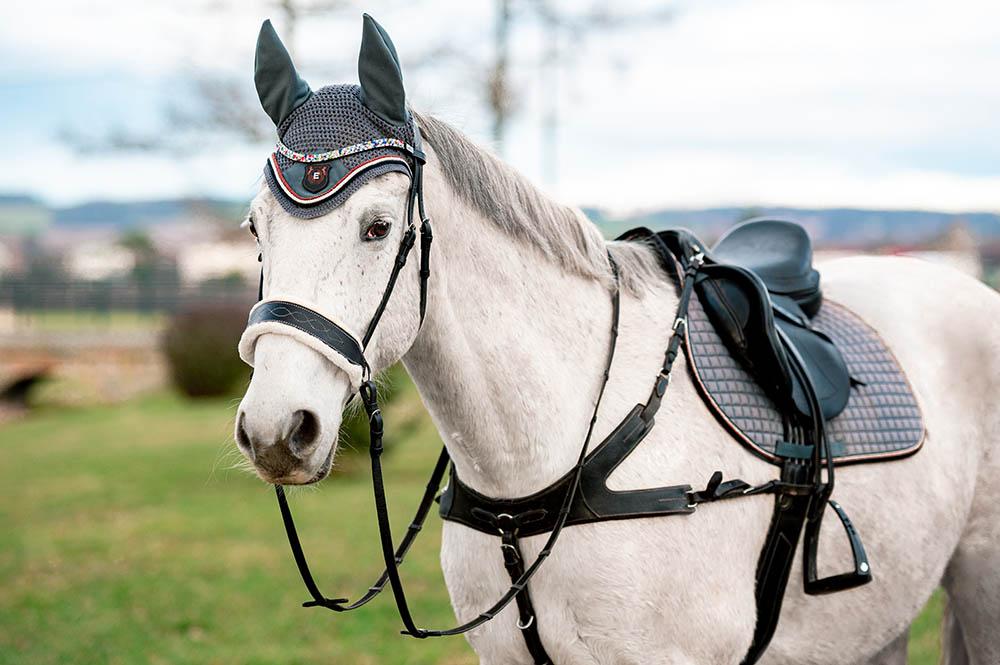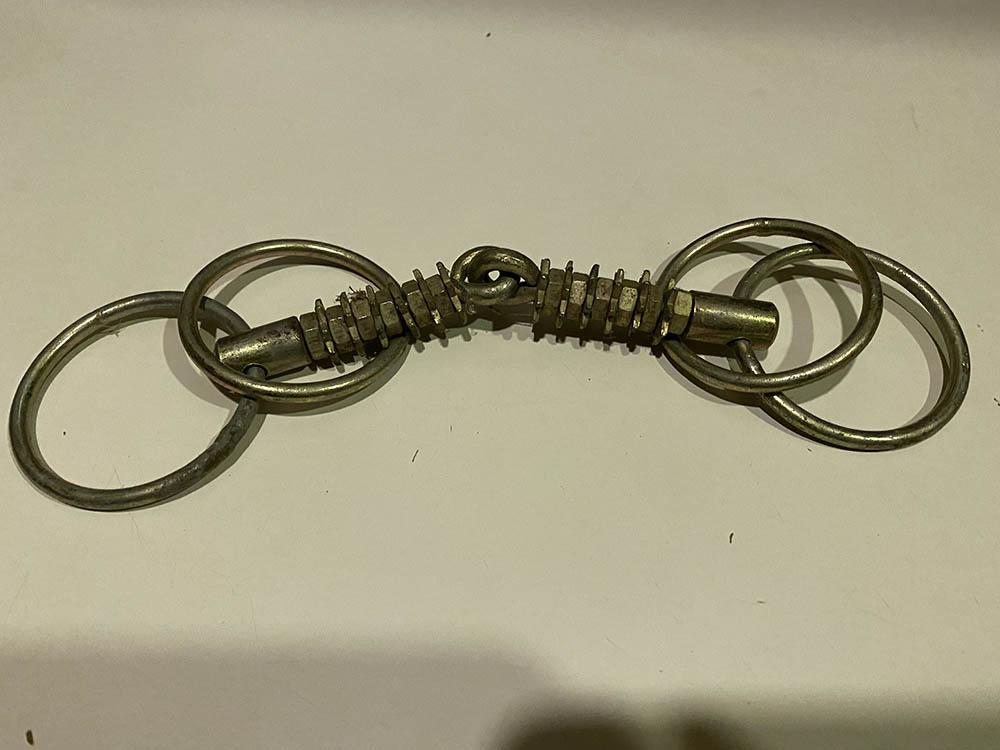A regular theme of this column is what we can learn from science that helps us be the best horsemen and women we can be. A recent focus of equestrian science has been to investigate horse welfare – and bits are often under fire.

It is important that we really know what is the experience of our horses, rather than what we have done for centuries and just guessed, and justified what is convenient for us (such as accommodating horses in stables) or what makes us feel good that we are caring for our horses. Rugs are a good example of this; we tend to over-rug our horses. Horses are able to regulate their temperature over a much wider range than we can.
There has been quite a bit of attention to noseband pressure. It has been found that it is not uncommon that the cavesson noseband can be tightened up so much that blood flow is blocked and there is damage to the underlying bone. Loosening the nosebands has been shown to be associated with increased freedom of front leg movement.
A very interesting recent study compared two types of bitless bridles and the snaffle bridle with regard to the pressure generated on the nose and the effect on the movement of the horse. The researchers in Yorkshire, UK, used five horses who were first able to get used to each bridle before the study started. Then they were each ridden in the three bridles on consecutive days. The riders were all experienced (BHSI Stage 3 riders). The horses had a standard warm-up and then the measuring apparatus was put on. The horses were then ridden in a standard format around the arena. There was no difference in the speed that the horses were ridden.
The three bridles were a snaffle bridle with a cavesson noseband, a side-pull bitless bridle where the reins attach to the noseband, and a cross-under bitless bridle where the reins attach to a strap which slides through a ring at the side of the horse’s head, passing under the jaw. Pressure on the rein will tighten the strap under the jaw and also pull on the opposite side of the headpiece of the bridle. I have used this type of bridle myself when a Grand Prix stallion injured his mouth and we wanted to keep him in work. I found it to be effective and simple to use, although I could not achieve much collection with it. We played around, jumped low fences for fun and he stayed fit and happy.
The researchers measured pressure on each horse’s head, both under the noseband and under the headpiece of the bridle (the poll). They also videoed the horses and analysed their movement with some pretty fancy software looking at the freedom of movement in the front legs and the angle of the head and neck.
What they found was that the side-pull bitless bridle generated significantly higher pressure on the nose than the snaffle. Both the average pressure and the maximum pressure were significantly higher in the side-pull bridle. In fact, the pressure was quite high. The authors compare the pressure to that of a tourniquet, and found that the pressures on the nose with the side-pull bridle were greater than the pressure needed to apply a tourniquet that would occlude blood flow in an exercising horse.




UNDER PRESSURE
These pressures, if applied over an extended time, could also damage the delicate facial nerves, which lie under the noseband. I note that although the authors cite this as a risk, most sport horses are not ridden for a long enough period to make this likely, and I would expect that endurance horses or trail horses who might be ridden in these bridles for more than one to three hours are not likely to have continuous pressure applied to the reins and so the nose, so this would also seem a low risk to me.
The cross-under bitless bridle was associated with a higher head, and less freedom in the lower leg than the snaffle bridle. The freedom in the shoulder was not affected by any bridle in this study. The authors discussed that the high head carriage and restricted movement with the cross-under bridle could indicate that the horse is resisting the pressure of this bridle. They suggested that this head-raising has been shown in other studies to be conflict behaviour, and that the high head posture may be associated with the horse dropping the back in an undesirable way.
So what does all this mean? Bitless bridles are not necessarily more kind than a snaffle bridle, and in fact may be worse in terms of the pressure on the nose and the comfort of the horse. Of course, we know that it is release of pressure that trains the horse. Pressure is applied, and when the horse gives to the pressure, the pressure is released. Different bridles and other aids will apply pressure in different places and in different ways. A snaffle applies pressure on the corners of the mouth; a curb will apply pressure on the bars of the mouth and also the poll. A gag bit applies the most pressure on the poll but tends to be not so good at influencing turning, so is often used with two reins, one set up like a snaffle.
IN THE HANDS OF THE BEHOLDER
Any piece of equipment is only as good as the person using it. There is very little equipment that is always bad. I have a “thorn” bit that I bought in India, where it is quite commonly used. This is in my view an awful piece of equipment. I suspect that it is in common usage where the skill of the people training the horses is quite poor. However, for anything attached to the reins the most important thing that determines a horse’s comfort will be the hands that hold the reins. The hands of an educated rider who has achieved an independent seat and a strong core can potentially use any piece of equipment with much more sensitivity and feel than a novice rider or an out-of-shape rider who needs to use the reins to balance on the horse.
It is release of pressure that trains. A well-trained horse will respond to light pressures and the skilled rider will soften the contact when the horse gives. The horse will feel it if you keep your fist closed but simply relax the tension out of your hands, wrists and shoulders. Correct hand position is a closed vertical fist with a flexed wrist. The thumbs should be facing each other: “kissing thumbs” I was taught. Thumbs on the top of the fist like a roof. A hipped roof, not a flat roof. These bent wrists, and soft elbows and shoulders take the strength out of your hand and allow the hand to follow. But good hands start with a stable and independent seat. When you have an independent seat you can use your aids independently of each other and you will be responsible for your own balance, not balancing on the mouth.
So, try to understand how the equipment you use influences the horse. Understand where the pressure is applied, and develop your skills so that you use your equipment well.
Have fun. EQ
READ MORE BY DR KERRY MACK:
Taking The Plunge With The Lunge – Equestrian Life, June 2021 issue
Dressage for Showjumpers – Equestrian Life, May 2021 issue
23 Shoulder-In Exercises to Improve Your Horse – Equestrian Life, April 2021 issue
Understanding Your Horse’s Inner Thoughts – Equestrian Life, March 2021 issue
Make the Most of Your Seniority – Equestrian Life, February 2021 issue
Building Better Relationships – Equestrian Life, January 2021 issue
Whipping Up Controversy – Equestrian Life, December 2020 issue
The Importance of a Trusting Relationship – Equestrian Life, November 2020 issue
Welcome to Kindergarten for Foals – Equestrian Life, October 2020 issue
The Carrot or the Liquorice? Positive Reinforcement – Equestrian Life, September 2020 issue
Submission or Stress? Something to Chew On – Equestrian Life, August 2020 issue
A Relaxed Horse is a Happy Horse – Equestrian Life, July 2020 issue
The Literate Horse Rider – Equestrian Life, June 2020 issue
Why Horses Love Ingrid Klimke – Equestrian Life, May 2020 issue

